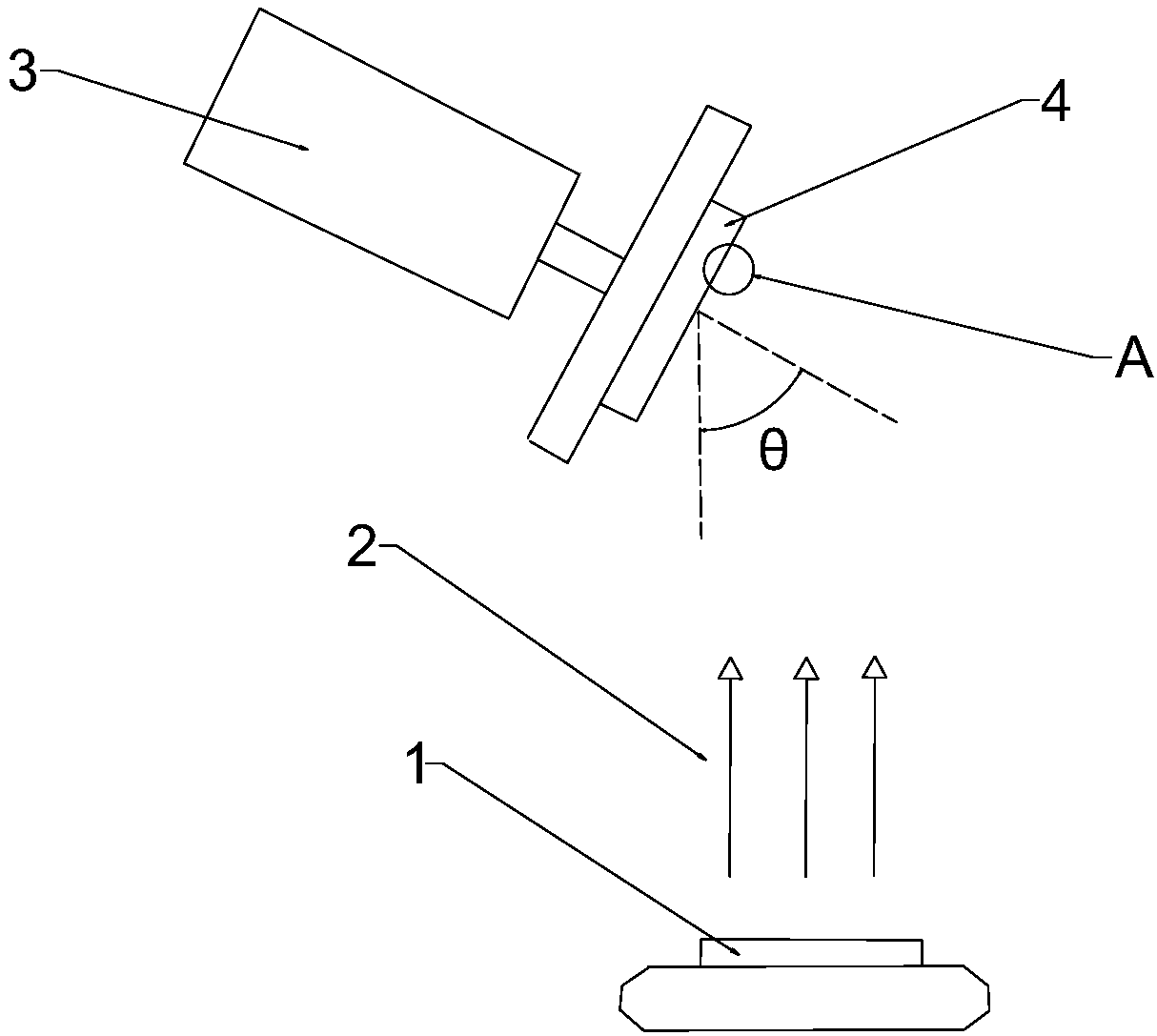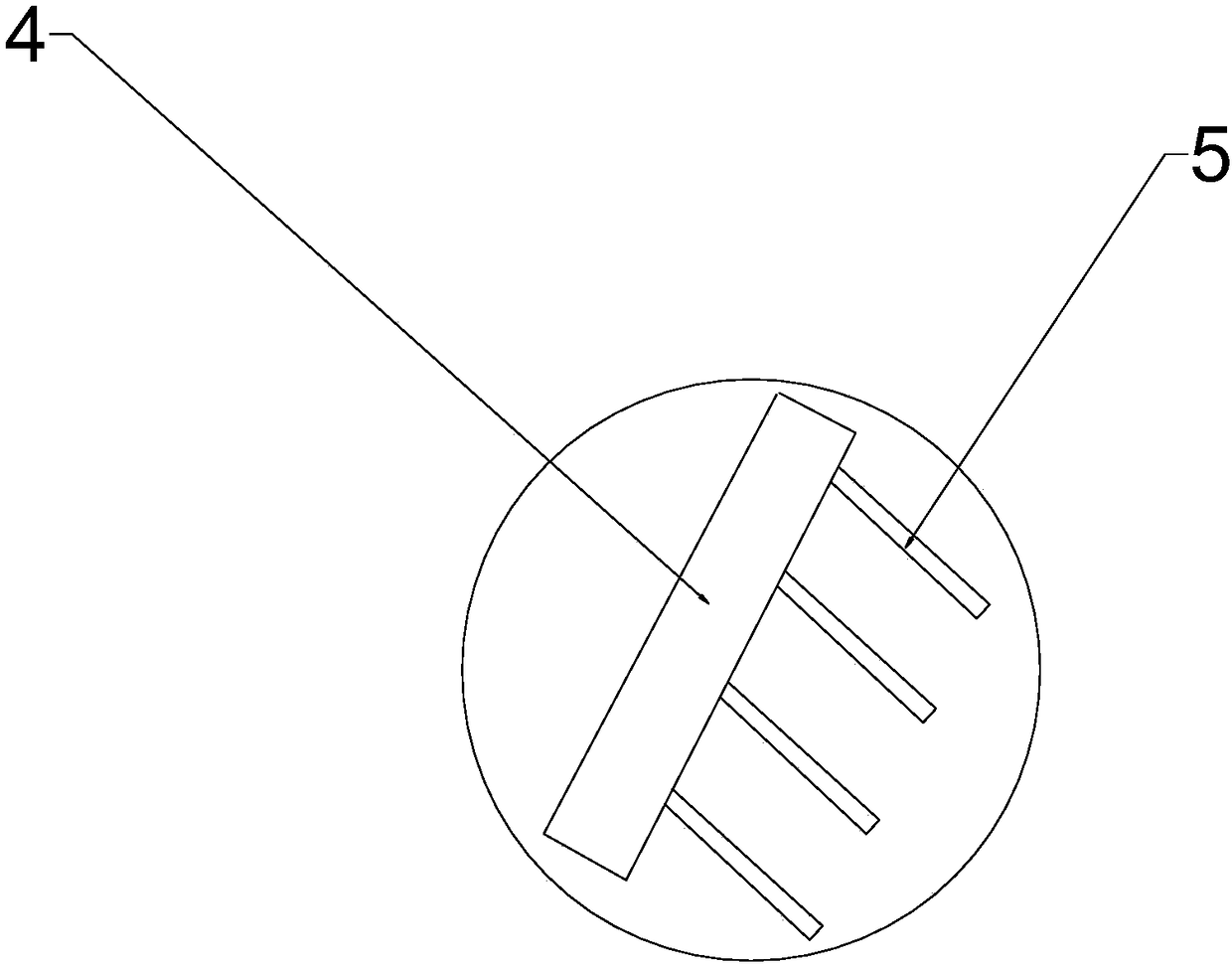Nanorod-based fluorescence enhancement structure, nanorod-based fluorescence detection system and autoinjection detection chip
A fluorescence enhancement and detection chip technology, which is applied in the field of detection and analysis, can solve the problems of complex operation steps, complex detection process, and low detection sensitivity, and achieve the effects of good specificity, simple manufacturing method, and high parallelism
- Summary
- Abstract
- Description
- Claims
- Application Information
AI Technical Summary
Problems solved by technology
Method used
Image
Examples
Embodiment 1
[0042] Preparation of Nanorods by Oblique Angle Deposition
[0043] Such as figure 1 As shown, the raw material source 1 is placed in the crucible, the gun filament under the preparation device 3 emits electron beams, and the raw material source (gold, silver, silicon oxide, etc.) in the crucible is evaporated. The raw material source 1 forms a raw material vapor 2, and the normal direction of the glass plate substrate 4 of the preparation device forms an angle θ (evaporation angle) with the direction of the vapor. Finally, nanorods 5 are formed on the substrate 4 .
[0044] Vapor nucleates first on the substrate surface, and nucleation centers on these surfaces continue to grow into nanostructures due to limited surface atom diffusion and shadowing effects. The shape parameters of the nanostructure can be controlled by controlling the evaporation angle θ, the rotation speed of the substrate during deposition, the deposition thickness, the deposition rate, and the power, and...
Embodiment 2
[0047] A fluorescence enhancement experiment was performed on the gold nanorods obtained in Example 1, and a fluorescence enhancement coefficient curve of the nanostructure was obtained.
[0048] Cover the surface of the gold nanorods obtained in Experiment 1 and the surface of the glass sheet with the same concentration and volume of fluorescent solution, and analyze the fluorescence intensity using a fluorescence microscope, and the ratio is the fluorescence enhancement coefficient.
[0049] Specifically, a fluorescein solution with a concentration gradient of 1 pM-100 μM is prepared. Put the gold nanorods into the reaction chamber with the same volume, and the reaction chamber is prepared by PDMS bonding glass substrate and a cover glass is added on it. Add the same volume of fluorescein solution with different concentration gradients into the reaction chamber, take and analyze the fluorescence images with a microscope camera, and get Figure 4 Schematic diagram of fluores...
Embodiment 3
[0051] Detection of cardiovascular diseases with cTnI antibody modified on the surface of metal nanorods.
[0052] Troponin I (cTnI) is of great significance in the early diagnosis of cardiovascular. In this embodiment, nanostructures are used to detect cTnI with high sensitivity.
[0053] The specific operation steps are as follows: First, a layer of self-assembled film (DSP / DSU / PEG, etc.) is fixed on the surface of the metal nanostructure, and a layer of Protein A / G molecules (optional) is covered on the self-assembled film, and then BSA solution block is added. The monoclonal antibody of troponin I is immobilized on the surface of the nanostructure through Protein A / G molecules, and biological samples containing different concentrations of troponin I are added, and continue to bind to the polyclonal antibody of the molecule, and finally the fluorescently labeled secondary antibody binds The polyclonal antibody realizes quantitative analysis, and the concentration of troponi...
PUM
| Property | Measurement | Unit |
|---|---|---|
| thickness | aaaaa | aaaaa |
| diameter | aaaaa | aaaaa |
| thickness | aaaaa | aaaaa |
Abstract
Description
Claims
Application Information
 Login to View More
Login to View More - R&D
- Intellectual Property
- Life Sciences
- Materials
- Tech Scout
- Unparalleled Data Quality
- Higher Quality Content
- 60% Fewer Hallucinations
Browse by: Latest US Patents, China's latest patents, Technical Efficacy Thesaurus, Application Domain, Technology Topic, Popular Technical Reports.
© 2025 PatSnap. All rights reserved.Legal|Privacy policy|Modern Slavery Act Transparency Statement|Sitemap|About US| Contact US: help@patsnap.com



